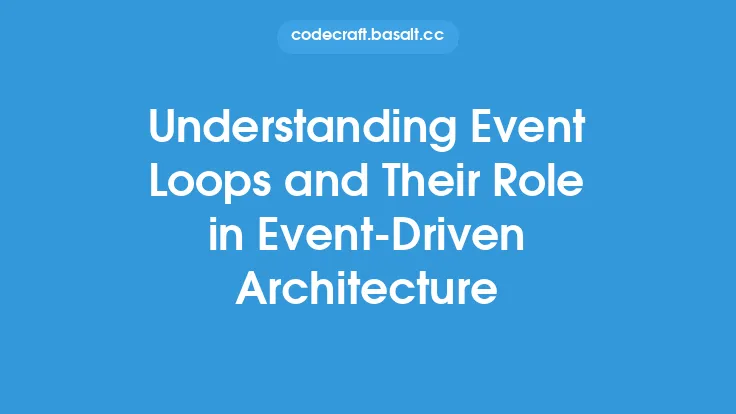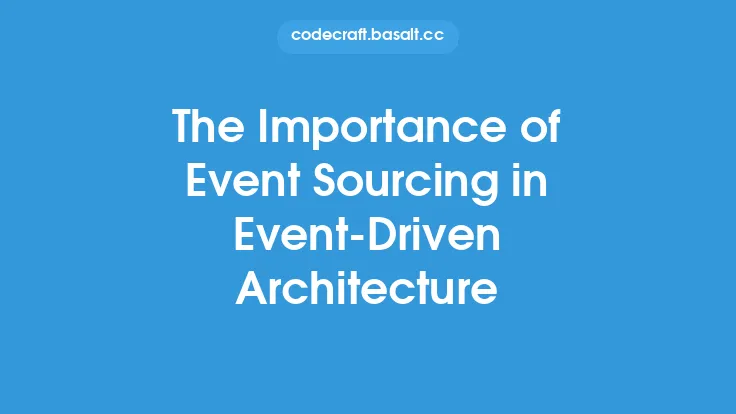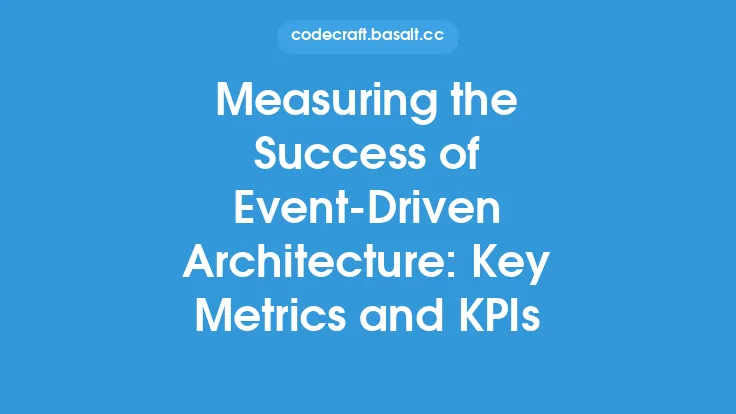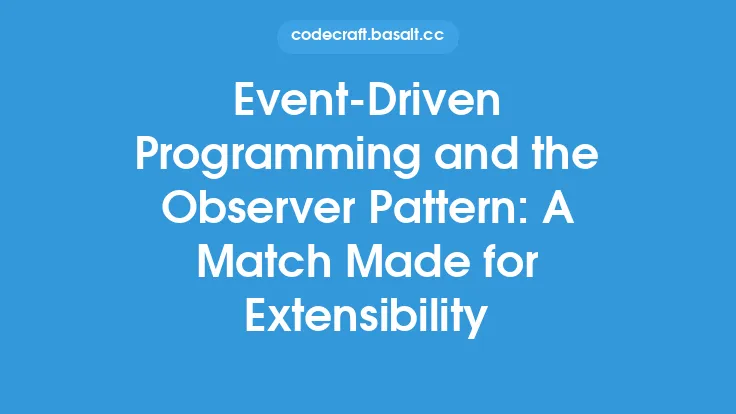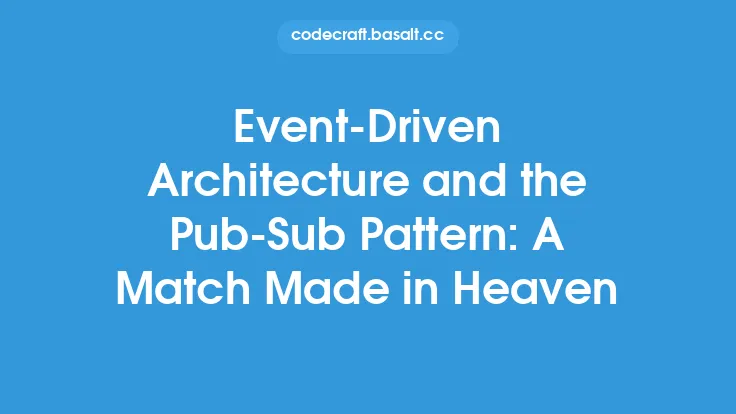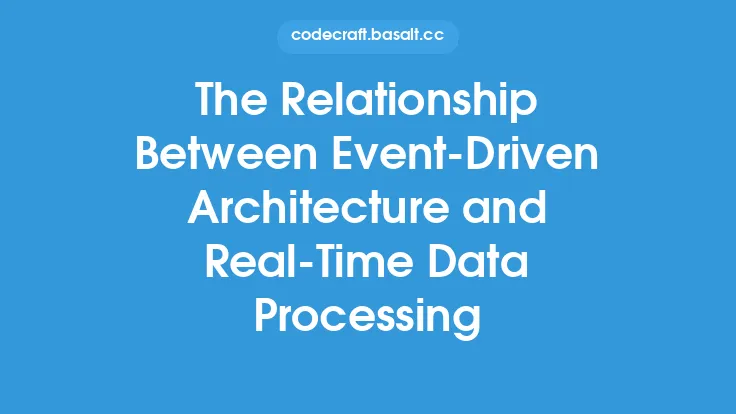Event-driven design is a fundamental concept in software architecture that has gained significant attention in recent years due to its ability to enable scalable, flexible, and maintainable systems. At its core, event-driven design is a paradigm that focuses on producing, processing, and reacting to events, which are significant changes in state or important milestones in a system. In this article, we will delve into the benefits and challenges of event-driven design, exploring its key principles, advantages, and disadvantages, as well as the technical considerations that come into play when implementing this design paradigm.
Introduction to Event-Driven Design
Event-driven design is based on the idea that a system's behavior can be defined in terms of events, which are notifications that something significant has happened. These events can be triggered by user interactions, changes in data, or other system activities. The system's components then react to these events by performing specific actions, such as updating data, sending notifications, or triggering other events. This design approach allows for a loose coupling between components, enabling them to evolve independently and reducing the risk of cascading failures.
Benefits of Event-Driven Design
The benefits of event-driven design are numerous and well-documented. One of the primary advantages is that it enables scalability, as new components can be added to the system without affecting existing ones. This is because event-driven design promotes a decoupling of components, allowing them to operate independently and reducing the risk of bottlenecks. Additionally, event-driven design facilitates flexibility, as components can be easily modified or replaced without affecting the overall system. This design approach also enables fault tolerance, as failed components can be easily identified and isolated, reducing the impact on the overall system.
Challenges of Event-Driven Design
While event-driven design offers many benefits, it also presents several challenges. One of the primary challenges is the complexity of event handling, which can lead to issues such as event duplication, event loss, and event ordering. These issues can be particularly problematic in distributed systems, where events may be processed out of order or lost in transit. Another challenge is the need for robust event storage and retrieval mechanisms, which can be difficult to implement, especially in systems with high event volumes. Furthermore, event-driven design requires careful consideration of event schema design, which can be time-consuming and error-prone.
Technical Considerations
From a technical perspective, event-driven design requires careful consideration of several key factors. One of the most important is the choice of event storage mechanism, which can range from simple in-memory data structures to complex distributed databases. The choice of event storage mechanism will depend on the specific requirements of the system, including the volume and velocity of events, as well as the need for event persistence and retrieval. Another important consideration is the design of the event processing pipeline, which can include components such as event filters, event transformers, and event aggregators. The design of the event processing pipeline will depend on the specific requirements of the system, including the need for event enrichment, event correlation, and event reduction.
Event-Driven Design Patterns
Several design patterns have emerged to support event-driven design, including the publish-subscribe pattern, the event sourcing pattern, and the command query responsibility segregation (CQRS) pattern. The publish-subscribe pattern enables components to publish events to a central hub, which then forwards the events to subscribed components. The event sourcing pattern involves storing the history of an application's state as a sequence of events, which can be used to reconstruct the application's state at any point in time. The CQRS pattern involves separating an application's command and query handling into separate components, which can be used to improve scalability and reduce complexity.
Best Practices for Event-Driven Design
To ensure the success of an event-driven design, several best practices should be followed. One of the most important is to define a clear and consistent event schema, which can be used to ensure that events are properly formatted and can be easily consumed by downstream components. Another best practice is to implement robust event handling mechanisms, which can include features such as event deduplication, event ordering, and event retries. Additionally, it is essential to monitor and analyze event flows, which can be used to identify bottlenecks, detect errors, and optimize system performance.
Conclusion
In conclusion, event-driven design is a powerful paradigm that can be used to create scalable, flexible, and maintainable systems. While it presents several challenges, including complexity of event handling and the need for robust event storage and retrieval mechanisms, these can be overcome with careful planning and design. By following best practices, such as defining a clear and consistent event schema and implementing robust event handling mechanisms, developers can create event-driven systems that are highly effective and efficient. As the field of software architecture continues to evolve, it is likely that event-driven design will play an increasingly important role in the development of modern software systems.
